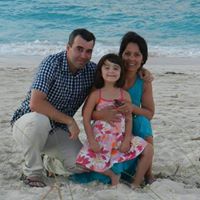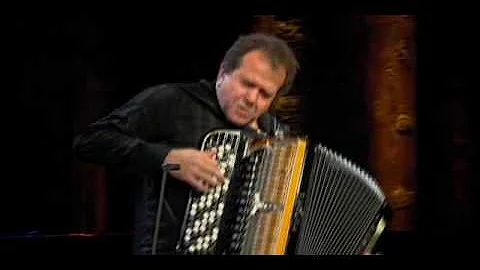Richard J Gagliano
age ~63
from Gig Harbor, WA
- Also known as:
-
- Richard Etal Gagliano
- Richard J Galliano
- Richard J Ratcliffe
- Richard J Gagliand
- Rick Gagliano
- Dick Gagliano
- Phone and address:
-
7713 Pioneer Way, Gig Harbor, WA 98335
253 858-7760
Richard Gagliano Phones & Addresses
- 7713 Pioneer Way, Gig Harbor, WA 98335 • 253 858-7760
- Tacoma, WA
- San Diego, CA
- Westborough, MA
- 3808 Forest Beach Dr NW, Gig Harbor, WA 98335
Work
-
Position:Self employed
Name / Title
Company / Classification
Phones & Addresses
President
PIN FOUNDATIONS, INC
Resumes

At Tharpe & Howell, Llp
view sourcePosition:
TORT ATTORNEY at THARPE & HOWELL, LLP
Location:
United States
Industry:
Legal Services
Work:
THARPE & HOWELL, LLP since Oct 2000
TORT ATTORNEY
tharpe & howell 2000 - 2010
attorney
TORT ATTORNEY
tharpe & howell 2000 - 2010
attorney
Us Patents
-
Integrated Precast Footings
view source -
US Patent:6578333, Jun 17, 2003
-
Filed:Aug 30, 2000
-
Appl. No.:09/651899
-
Inventors:Richard J. Gagliano - Gig Harbor WA 98332
-
International Classification:E02D 2750
-
US Classification:52295, 52155, 52426, 52699, 249 34, 405230
-
Abstract:A low impact foundation system requiring little or no excavation, and allowing for the preservation of the soil and drainage characteristics of the site upon which it is erected. The system utilizes small obliquely driven piles in combination with a pre-cast component designed to engage a standard foundation wall.
-
Surface Structures And Methods Thereof
view source -
US Patent:6910832, Jun 28, 2005
-
Filed:Jul 31, 2003
-
Appl. No.:10/633155
-
Inventors:Richard J. Gagliano - Gig Harbor WA, US
Roderick H. Buckley - Maple Valley WA, US -
International Classification:E02D005/22
E02D027/50
E04G011/00 -
US Classification:405231, 405232, 405257, 527245, 52699, 52155, 52295, 52426, 249 34, 249 48
-
Abstract:A novel foundation system, method of manufacture and method of implementation are disclosed, comprising a simplified cast structure/pile combination strengthened by dispersed steel fibers within the cementious material.
-
Integrated Footings
view source -
US Patent:7076925, Jul 18, 2006
-
Filed:Jul 24, 2001
-
Appl. No.:10/362838
-
Inventors:Richard Gagliano - Gig Harbor WA, US
-
Assignee:PIN Foundations, Inc. - Gig Harbor WA
-
International Classification:E02D 27/50
E04G 11/00 -
US Classification:52155, 52295, 52426, 52699, 249 34
-
Abstract:A low impact foundation system requiring little or no excavation, and allowing for the preservation of soil and drainage characteristics of the site upon which it is erected. The system utilizes small obliquely driven piles in combination with footing or otherwise footing components designed to engage a foundation wall and replace the common footing typically constructed below such walls.
-
Surface Structures And Methods Thereof
view source -
US Patent:7326003, Feb 5, 2008
-
Filed:Jun 8, 2005
-
Appl. No.:11/149047
-
Inventors:Richard J. Gagliano - Gig Harbor WA, US
-
International Classification:E02D 27/32
-
US Classification:405229
-
Abstract:A novel foundation system, method of manufacture and method of implementation are disclosed, comprising a simplified cast structure/pile combination advantageously shaped for selective positioning in different soil conditions to become a supporting foundation. In at least one aspect, the shape comprises a cavity or shaped recess that is initially empty, and operable to accept soil displaced by soil heave. The cavity preferably is configured to have a depth estimated to be equal to or greater that an estimated vertical heave displacement of a given site soil, in order to minimize soil heave displacement of the cast structure/pile combination. In at least one other aspect, the shape comprises a portion configured to cleave soil if the soil heaves.
-
Novel Surface Structures And Methods Thereof
view source -
US Patent:20070224001, Sep 27, 2007
-
Filed:Feb 22, 2007
-
Appl. No.:11/710387
-
Inventors:Richard Gagliano - Gig Harbor WA, US
-
International Classification:E02D 31/00
-
US Classification:405229000
-
Abstract:A novel foundation system, method of manufacture and method of implementation are disclosed, comprising a simplified cast structure/pile combination advantageously shaped for selective positioning in different soil conditions to become a supporting foundation. In at least one aspect, the shape comprises a cavity or shaped recess that is initially empty, and operable to accept soil displaced by soil heave. The cavity preferably is configured to have a depth estimated to be equal to or greater that an estimated vertical heave displacement of a given site soil, in order to minimize soil heave displacement of the cast structure/pile combination. In at least one other aspect, the shape comprises a portion configured to cleave soil if the soil heaves.
-
Multiple Pile Foundation Locking Systems
view source -
US Patent:20130272802, Oct 17, 2013
-
Filed:Sep 12, 2012
-
Appl. No.:13/611259
-
Inventors:Richard J. Gagliano - Gig Harbor WA, US
-
International Classification:E02D 5/38
E02D 5/22 -
US Classification:405257, 405231
-
Abstract:Low environmental impact, surface installed, multiple pile foundation locking systems providing stable connection between above ground structures and the earth, having a plurality of driving holes in an engineered component through which piles may be driven into the surrounding soil and locked in a predetermined position to create, in differing configurations, the necessary resistances to any combination or relative proportions of bearing, uplift and lateral loads associated with such structures. The piles are driven at predetermined angles relative to the supported structure, consistent with its loading characteristics, and are locked in the driving holes through which they pass, further binding in their configuration under load.
-
Structure Load Transfer Systems
view source -
US Patent:53951840, Mar 7, 1995
-
Filed:Jan 29, 1993
-
Appl. No.:8/011370
-
Inventors:Richard J. Gagliano - Seattle WA
-
International Classification:E02D 500
-
US Classification:405229
-
Abstract:Low environmental impact, surface installed, load transfer systems providing stable connection between above ground structures and the earth, having a plurality of offset driving holes in an integral structure member, or in a bracket or brackets attachable to such a structure, through which piles may be driven into the surrounding soil to create, in differing configurations, the necessary resistances to any combination or relative proportions of the bearing, uplift and lateral loads associated with such structures. The piles are driven at predetermined angles relative to the supported structure, and consistent with its loading characteristics, and bind under load against the offset driving holes through which they pass.
-
Pinned Foundation System
view source -
US Patent:50392565, Aug 13, 1991
-
Filed:Mar 15, 1990
-
Appl. No.:7/493996
-
Inventors:Richard Gagliano - Seattle WA
-
International Classification:E02D 500
-
US Classification:405244
-
Abstract:A pinned foundation system with resiliency under certain loading conditions and requiring minimum excavation, having a cast footing in combination with a plurality of sleeves through which piles may be driven into the soil to create the necessary bearing, uplift and lateral forces to support a structure. The sleeves are retained in fixed position relative to the footing, at predetermined angles corresponding to the specific structure loading characteristics desired for the ensuing foundation.
Other Social Networks

Richard Gagliano
view sourceNetwork:
Friendster
Friendster: ; location: Washington, DC, US; Windham, ME;
Youtube

Richard Gagliano
view sourceFriends:
Dana Williams, Stacey Comeaux LeBlanc, Cary Farmer, Evans A. Travasos

Rich Gagliano
view sourceFriends:
Maryann Pulvirenti, Michael Christensen, Jamie Silverman, Ryan Murphy
Classmates

College of the Holy Cross...
view sourceGraduates:
Richard Gagliano (1978-1982),
Richard Murphy (1973-1977),
Peter Foley (1958-1962),
Jacqueline Daily (1984-1988)
Richard Murphy (1973-1977),
Peter Foley (1958-1962),
Jacqueline Daily (1984-1988)

Holy Cross High School, F...
view sourceGraduates:
Richard Gagliano (1962-1966),
Michael Conway (1980-1984),
Karel Hering (1997-2001),
James Demonaco (1996-2000),
Humberto Gonzalez (1988-1991)
Michael Conway (1980-1984),
Karel Hering (1997-2001),
James Demonaco (1996-2000),
Humberto Gonzalez (1988-1991)

Bishop Hafey High School,...
view sourceGraduates:
Katie Gapinski (1995-1999),
Richard Palushock (1991-1995),
Candida Diehl (1989-1993),
Richard Gagliano (1979-1983)
Richard Palushock (1991-1995),
Candida Diehl (1989-1993),
Richard Gagliano (1979-1983)

Fordham Preparatory, Bron...
view sourceGraduates:
Richard Gagliano (1974-1978),
Matthew Casey (1975-1979),
Charles Pisacano (1975-1979)
Matthew Casey (1975-1979),
Charles Pisacano (1975-1979)

Rockledge High School, Ro...
view sourceGraduates:
Danielle Sawyer (1995-1999),
Donna Nieto (1976-1980),
Keisha Wright (1995-1999),
Richard Gagliano (1974-1978),
Deidra Newbill (1977-1981)
Donna Nieto (1976-1980),
Keisha Wright (1995-1999),
Richard Gagliano (1974-1978),
Deidra Newbill (1977-1981)
Googleplus

Richard Gagliano

Richard Gagliano
Flickr
Get Report for Richard J Gagliano from Gig Harbor, WA, age ~63









